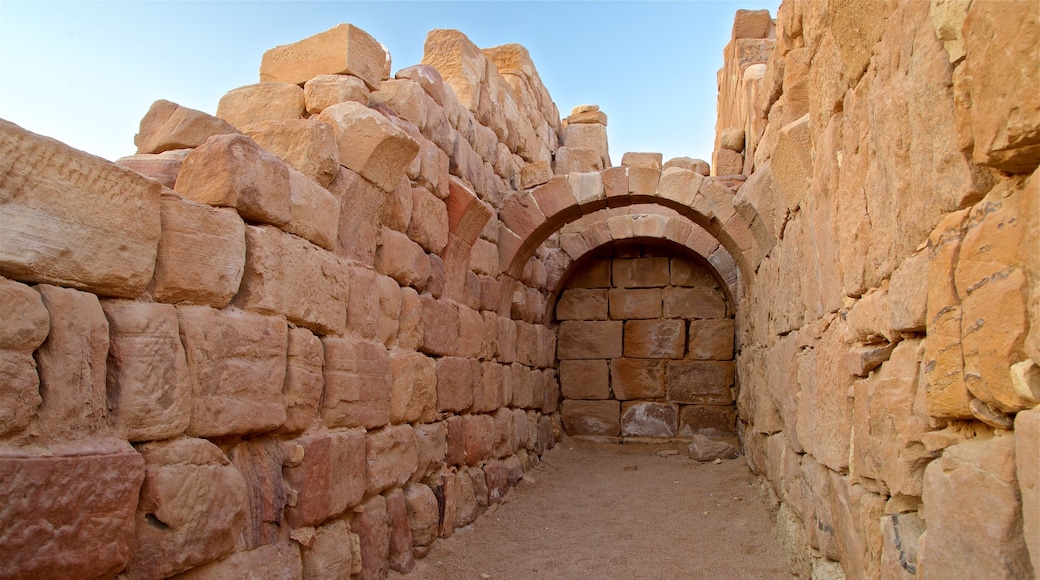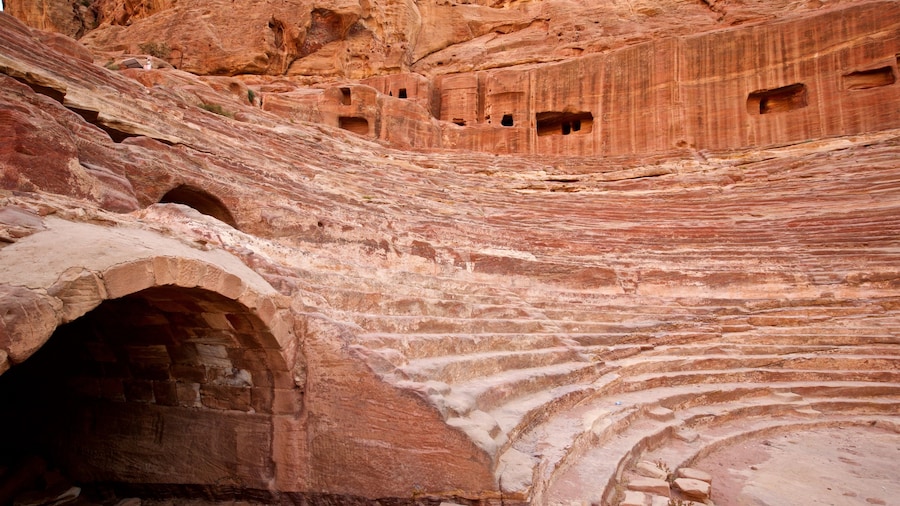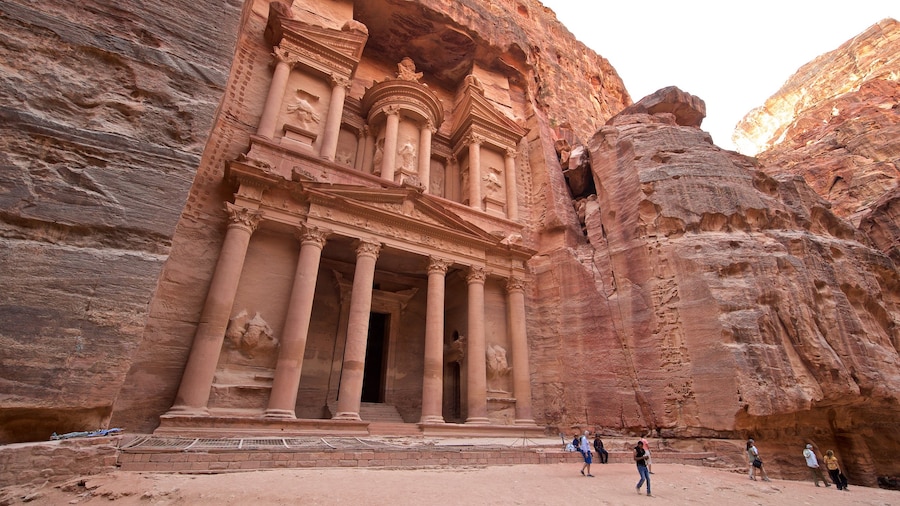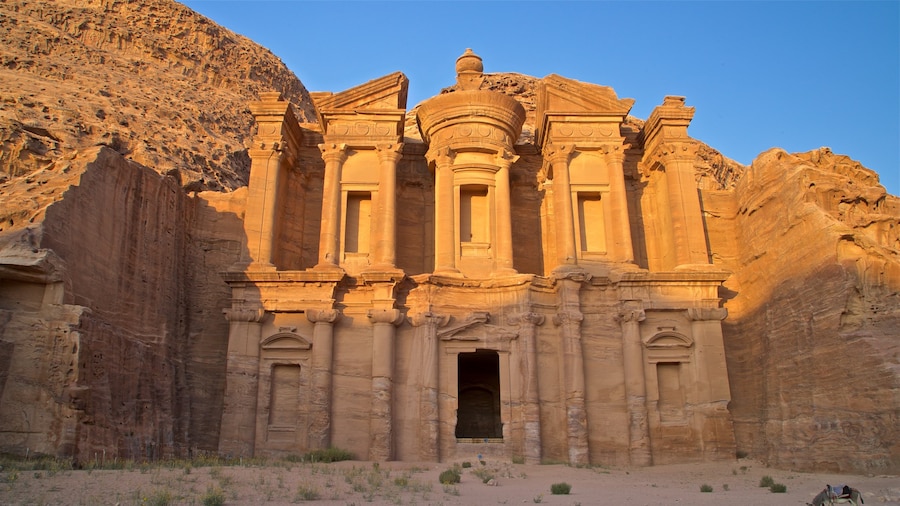Stand beneath ancient stone columns, admire the detail of the large mosaics or just take in the views from this 5th-century ruin.
The Byzantine Church, often simply referred to as Petra Church, is part of the much larger complex of the famous “Lost City” of Petra. The remaining mosaics and crumbling walls of this church make for a nice change from all the rock-carved façades in Petra. It must have looked dazzling in its time.
Enjoy the vistas as you climb up the hill from Petra’s Colonnaded Street to the church. If you have trouble negotiating the rough, rocky path in the heat of the day, consider paying for a donkey, camel or horse-and-cart ride to get you there.
Petra Church was damaged by fire around A.D. 600 and then hit by earthquakes, causing the building to fall into disrepair. Look closely at the ancient stone walls and columns of the remains of this church. Believed to have been built around A.D. 450, the church stands on the foundations of previous Roman and Nabatean structures.
Wander over to the part of the church that is covered by a modern canopy. The shelter houses the impressive mosaics that the church is renowned for. Study the figures on the walls and notice the intricate shapes and details. The north and south isles each have different mosaics depicting animals, people and geometric patterns.
Take a look around at the other features of the church as well. Read the detailed information on the signs about the apse, water cistern and baptistry. Before you leave, enjoy the views from the Byzantine Church. Among the rugged and barren hills, you can see many of the other treasures in the Petra complex.
The Byzantine Church is part of the entry into Petra and no additional fee is required. Bring bottled water and wear protective clothing, especially if you are visiting in summer. Wear sturdy shoes and a light jacket if you’re planning on staying until after sunset.



















































